Abstract
Introduction: Stickler syndrome is a rare form of hereditary generalised collagenopathies that manifests as ocular, skeletal, auditory and orofacial symptoms. It arises because of mutations in the procollagen genes COL2A1, COL9A1, COL9A2, COL9A3, COL11A1 and COL11A2.
Patient presentation: An 11-year-old Chinese boy was referred to our hospital with a history of reduced and distorted vision. He had a history of amblyopia and high myopia by age 4 years. A comprehensive medical assessment was conducted which included complete systemic, ophthalmic, optometric examinations and genetic testing. The patient had characteristic signs of Stickler syndrome which include high myopia, a cataract, open-angle glaucoma, anterior high iris root insertion, membranous vitreous changes, peripheral retinal degeneration and foveal hypoplasia but no retinal detachment. No obvious auditory, orofacial, or skeletal abnormalities were found. Exome sequencing identified COL2A1 heterozygous splicing variation. He is a child of nonrelated parents. His mother is highly myopic.
Management and outcome: After optometry assessment, amblyopia and myopia were corrected. Glaucoma medication was given, and retinal laser photocoagulation was performed. The patient’s vision is currently stable.
Conclusion: COL2A1 gene pathogenic splicing mutation was discovered in a Stickler syndrome type I patient with an ocular-only manifestation. Exome sequencing results indicated site c.1597C>T/p. Arg533*(NM_001844.5) which is a heterozygous variant inherited from the mother.
Contribution: In this report, we demonstrate how clinical presentation and molecular genetic tests are helpful in making the diagnosis of Stickler syndrome before retinal detachment.
Keywords: COL2A1 gene; stickler syndrome Type I; high myopia; exome sequencing; retinal degeneration.
Introduction
Stickler syndrome is a rare form of generalised hereditary connective tissue disorders. Gunnar B. Stickler first described it in 1965. It is a progressive collagen formation disorder characterised by ocular, systemic, skeletal, joint, orofacial and auditory manifestations. Its estimated incidence is 1:7500 to 10 000. Heritable rhegmatogenous retinal detachment in children is mostly caused by Stickler syndrome.1
High myopia, retinal detachment or tears, cataracts, vitreous degenerative changes, glaucoma, and rarely posterior chorioretinal atrophy are pathological ocular findings. Systemic manifestations include midfacial hypoplasia and Pierre Robin sequence’s cleft palate, anteverted nares, a depressed nasal bridge, sensorineural or conductive hearing loss. Micro or retrognathia, mild spondyloepiphyseal dysplasia, hypermobility, and significant joint bony enlargement in infants are mild to severe skeletal and joint complaints. Articular surface irregularity and joint hypermobility can cause early osteoarthritis (before 40 years), which causes joint stiffness and discomfort. Symptoms vary per person.2
The phenotypic diversity is because of genetic heterogeneity in collagen and non-collagen genes. Type I Stickler syndrome, caused by COL2A1 gene mutations in 80% – 90% of cases, is one of 10 genetically and clinically distinct subgroups. Type IA mutations impact the COL2A1 gene’s exon 2 and cause ocular-only Stickler syndrome with no systemic manifestations. It may manifest as mild type I with membranous vitreous abnormalities. Type I B mutations cause ocular and systemic manifestations. Other forms include Type II because of mutations in the COL11A1 gene, Type II Recessive COL11A1 and Type III because of mutations in the COL11A2 gene. These are autosomal dominant, with 50% chance of inheritance. COL9A1, COL9A2 and COL9A3 gene mutations produce Type IV, V and VI respectively, which are autosomal recessive, 25% inherited, 50% carried, 25% unaffected. Patients with STL features in the non-collagen-coding genes BMP4, LRP2 and LOXL3 have also been reported.3,4
Our patient had ocular-only symptoms. To improve the clinical understanding and diagnosis of this disease, we retrospectively analysed a case of Stickler syndrome in a child, summarised its clinical data, and reviewed the relevant literature reported as follows.
Ethical considerations
Ethical waiver for this study was obtained from the Ethics Committee of The First Affiliated Hospital of Henan University of Science and Technology on 16 January 2024.
Patient presentation
An 11-year-old boy was referred and admitted to our hospital with impaired vision and distortion in the left eye for 15 days. He had myopia and amblyopia in both eyes by age 4. The left eye was highly myopic, and corrected visual acuity was basically normal after bilateral treatment of both amblyopia and myopia.
He was a healthy, typical infant who had a natural birth and met developmental milestones. He was typical cognitively and expressively. His parents are non-related, and his mother has had bilateral high myopia since childhood.
On physical examination, he had a height of 150 cm, no history of hearing impairment, no facial dysplasia or palatal defects, no Micro or retrognathia or anteverted nares, and had a normal range of motion of the spine and joints.
Ophthalmic examination
Optometry BCVA (Best corrected visual acuity)
- Right eye: VA 0.25 (–3.75DS/–4.00DC*15→0.8)
- Left eye: VA 0.05 (–7.00DS/–4.00DC*170→0.6)
- Intraocular pressure: Right eye (RE): 24 mmHg, Left eye (LE): 38 mmHg
Slit lamp examination showed a congenital non-progressive peripheral or quadrantic cortical wedge-shaped, fleck or lamellar cataract in the left eye (Figure 1) and membranous vitreous abnormalities in both eyes. Figure 2a and Figure 2b display large tortuous vessels in the superior temporal and inferior temporal branches of both eyes (BE) some vessels crossing capillaries near the central sulcus horizontally or obliquely, and significantly more vascular branches (about 500 µm in diameter) extending from the optic disc towards the macula, less than 0.08 mm away from the central sulcus, with vitreous membrane in front of the peripheral retina, partially adhering to the retina. Figure 2c and Figure 2d of retina showing laser marks on the retinal periphery after laser photocoagulation.
 |
FIGURE 1: Slit lamp biomicroscopic examination. Congenital non-progressive peripheral or quadrantic cortical wedge-shaped, fleck or lamellar cataract in the left eye. |
|
 |
FIGURE 2: Fundus photograph. (a) and (b) display large tortuous vessels in the superior temporal and inferior temporal branches of both eyes (BE) with some vessels crossing capillaries near the central sulcus horizontally or obliquely, and significantly more vascular branches (about 500μm in diameter) extending from the optic disc towards the macula, less than 0.08 mm away from the central sulcus, with vitreous membrane in front of the peripheral retina, partially adhering to the retina. (c) and (d) display laser marks on the retinal periphery after laser photocoagulation treatment. |
|
In Figure 3a foveal hypoplasia, image shows foveal bulge at the foveal center or shallow fovea. Figure 3b LE Sub foveal fissure in the macula. Figure 3c hypoplasia of inner retina and macular, shallow foveal morphology, sub foveal and subepithelial fissure of the temporal macula area of the left eye. Figure 3d atrophy and retinal thinning of the nasal aspect of the optic disc of both eyes, interlaminar splitting BE.
 |
FIGURE 3: Optical coherence tomography. (a) Foveal hypoplasia, image shows foveal bulge at the foveal center, fovea is shallow. (b) Left eye (LE) subfoveal fissure in the macula. (c) Hypoplasia of inner retina and macular, shallow foveal morphology, subfoveal and subepithelial fissure of the temporal macula area of the left eye. (d) Atrophy and retinal thinning of the nasal aspect of the optic disc of both eyes, interlaminar splitting both eyes (BE). |
|
Visual Field (Figure 4) is relatively normal. Figure 4a indicates a decreased peripheral temporal and inferior Visual Acuity RE, Figure 4b indicates a decreased peripheral nasal and temporal visual acuity in LE.
 |
FIGURE 4: Visual field test where (a) indicates a decreased peripheral temporal and inferior Visual Acuity in the right eye (RE) and (b) the decreased peripheral nasal and temporal visual acuity in the left eye (LE). |
|
Table 1 and Table 2 show the patient’s clinical findings that led to our diagnosis of Stickler syndrome.
| TABLE 1: Patient’s clinical findings that led to our diagnosis of Stickler syndrome. |
Differential diagnosis
Stickler syndrome is distinct from Wagner syndrome and erosive vitreoretinopathy (ERVR), which are brought on by VCAN (5q13-q14) gene mutations. They may exhibit moderate myopia, presenile cataracts, ectopic fovea, and peripheral tractional retinal detachment. No related systemic anomalies have been reported. Erosive vitreoretinopathy may be allelic to Wagner’s syndrome. In addition to Wagner syndrome’s clinical characteristics, ERVR has Progressive nyctalopia (night blindness), a narrowing of the visual field, and atrophic chorioretinal tissue. Fluorescein angiography reveals retinal pigment epithelium and choriocapillaris depletion. Goldmann-Favre or Enhanced S Cone Syndrome (GFS or ESCS) also exhibit night blindness or a steady reduction in vision during the first decade of life. It causes changes that mimic foveal cystoid or schisis, central or peripheral retinoschisis, hyperpigmented retinal pigment epithelial aggregates along the retinal vascular arcades, vitreous degeneration and cataract. Electroretinograms could reveal colour vision abnormalities and visual field loss.6
Management and outcome
Prophylaxis and treatment are both necessary for Stickler syndrome general management, with retinal detachment being the most prevalent consequence.
Treatment of manifestations
Patient was prescribed spectacles to correct myopia and commenced on a carbon anhydrase inhibitor and beta blocker eye drop: pressure is now RE: 16 mmHg; LE: 15 mmHg. Retinal laser photocoagulation was performed to seal the degenerative area in the peripheral retina, and for prevention of the occurrence of retinal detachment (Figure 2c and Figure 2d). Six months after laser, the macular foveal sub-epithelial fissure disappeared and vision improved, indicating probable high myopic macular traction syndrome. The patient is being followed up every 3 months and was advised to refrain from engaging in activities that could cause traumatic retinal detachment, such as contact sports.
Discussion
Clinical criteria for Stickler syndrome type 1 based on clinical characteristics, family history and molecular data have been proposed yet untested. Early detection of type 1 stickler syndrome is challenging as most people have no family history. Because of its dynamic presentation, variable indications and symptoms, and possible lack of information, Stickler syndrome is rare and might be missed or misunderstood. The patient was diagnosed at 10 years old, even though he first attended the hospital at age 4 years.7
The typical clinical features of Stickler syndrome Type 1 that were seen in our patient include:
High myopia: Our patient presented with congenital myopia of high degree (> –3 dioptres), which is nonprogressive. Spectacles were prescribed, and the vision improved and has remained stable. A total of 75% of Stickler syndrome patients have congenital high myopia which is stable with slow to no progression accompanied with astigmatism. Alterations in the scleral collagen appeared to underlie or be linked to the pathogenetic variables (including inheritance) which are associated with the development of myopia. It is suggested that changes in type II collagen may impact ocular development and that COL2A1 association is a result of a common linkage disequilibrium structure with a causative mutation in a neighbouring gene.8,9
Open angle glaucoma: Our patient’s intra ocular pressure was controlled with topical medication. An open angle with congenital iris root hypoplasia and a forward iris root insertion point was seen on gonioscopy like iris pigmentation which had earlier been mistaken for pigmentary glaucoma.
Iridocorneal angle abnormalities: Iridocorneal angle anomalies diminish flow and aqueous humour absorption, increasing resistance and a persistent, painless building up of eye pressure. According to literature, 26% of Stickler syndrome patients have open-angle abnormalities, and some develop glaucoma before the disease. Stickler syndrome-related infantile-onset glaucoma is rare.10,11,12
Our patient presented with vitreous abnormalities (membranous type) and a large degenerative area in the peripheral retina with no tears or detachment. Stickler syndrome patients often present with vitreous degenerative changes. Literature reports that these are associated with 80% of retinal tears and detachment in type I. Sixty per cent of Stickler syndrome patients have retinal detachment, 75% are bilateral, and the majority are in the posterior pole.
Our patient had radial peri disc retinal degeneration, posterior pole choroidal retinal atrophy, peripheral retinal lattice degeneration, macula foveal hypoplasia, peri disc retinal atrophy and peripheral vision loss as seen on OCT and HVF (Figure 3, Figure 4 and Figure 5), but visual acuity and myopia did not correlate with inner retinal thickness. Navarrete et al. observed patients with a similar presentation, which is consistent with stickler syndrome’s characteristic macular foveal hypoplasia. The cause is unknown but may be because of reduced collagen expression affecting foveal development.7,13
 |
FIGURE 5: Retinal thinning and atrophy of the Naso temporal aspect of the optic disc in both eyes. |
|
No obvious viral, immune and inflammatory-related indicators, indicating active intraocular inflammation were found in both vitreous and blood. Moderately elevated VCAM cell adhesion molecules could indicate blood-ocular barrier disruption and possible moderate intraocular tissue edema, which may be related to the late optic disc fluorescein leakage on fluorescein angiography. Clinical presentation and molecular genetic studies diagnose Stickler syndrome. Multigene panels may comprise COL2A1, COL9A1, COL9A2, COL9A3, COL11A1, COL11A2 and other related genes. COL2A1 gene testing identified stickler syndrome type I (STL1). The heterozygous variant c.1597C>T/p. Arg533*(NM_001844.5) was listed as a pathogenic variant in the CLIN Var database with 2-star rating (Table 3) in the HGMD database. According to the ACMG criteria, the mutation was maternally inherited. The variant is pathogenic and exhibits an ocular-predominant phenotype because of COL2A1 gene variation.4,5
| TABLE 3: Molecular genetic testing results. |
Conclusion
Stickler syndrome patients usually present with retinal detachment; thus, abnormal retinal development before retinal detachment is rare. Before the onset of the disease, Stickler syndrome may not be clearly diagnosed, but in this case, we see the abnormal development of the eye before the retinal detachment. Abnormal retinal blood vessel development helps us to clearly diagnose and treat before it occurs so we can avoid the occurrence of retinal detachment. Stickler syndrome’s long-term visual outcomes are unknown, although prophylactic retinal detachment treatment could improve them. Because of the progressive nature of ocular and systemic symptoms, the likelihood of having major disability including blindness, hearing loss, and incapacitating arthritis increases with age.
Acknowledgements
Competing interests
The authors declare that they have no financial or personal relationships that may have inappropriately influenced them in writing this article.
Authors’ contributions
M.H. collected the data and drafted the manuscript; J.W. reviewed and finalised the manuscript; Y.X. carried out the medical treatment and helped draft the manuscript. All authors have read and approved the manuscript.
Funding information
This research received no specific grant from any funding agency in the public, commercial, or not-for-profit sectors.
Data availability
All required data are available within the article and its supplementary materials. Additional data are available from the corresponding author, J.W., upon reasonable request.
Disclaimer
The views and opinions expressed in this article are those of the authors and are the product of professional research. It does not necessarily reflect the official policy or position of any affiliated institution, funder, agency, or that of the publisher. The authors are responsible for this article’s results, findings, and content.
References
- Soh Z, Richards AJ, McNinch A, Alexander P, Martin H, Snead MP. Dominant Stickler syndrome. Genes. 2022;13(6):1089. https://doi.org/10.3390/genes13061089
- Kjellström U, Martell S, Brobeck C, Andréasson S. Autosomal recessive Stickler syndrome associated with homozygous mutations in the COL9A2 gene. Ophthalmic Genet. 2021;42(2):161–169. https://doi.org/10.1080/13816810.2020.1861309
- Snead MP, Richards AJ. I.C. Hereditary vitreo-retinopathies. In: Sebag J, editor. Vitreous. New York, NY: Springer, 2014; p. 21–40. https://doi.org/10.1007/978-1-4939-1086-1_3
- Robin NH, Moran RT, Ala-Kokko L. Stickler syndrome synonym: Arthroophthalmopathy. In; MP, Mirzaa GM, Paton RA, et al., editors. GeneReviews®. Seattle, WA: University of Washington, 2000; p. 1993–2023.
- Matsushita I, Nagata T, Hayashi T, et al. Foveal hypoplasia in patients with Stickler syndrome. Ophthalmology. 2017;124(6):896–902. https://doi.org/10.1016/j.ophtha.2017.01.046
- Kloeckener-Gruissem B, Amstutz C. VCAN-Related Vitreoretinopathy. In: Adam MP, Mirzaa GM, Pagon RA, et al., editors. GeneReviews®. Seattle, WA: University of Washington; p. 1993–2023.
- Booth M. Stickler syndrome: A review of clinical manifestations and the genetics evaluation. J Pers Med. 2020 Aug 27;10(3):105. Birmingham, AL 35233 USA; https://doi.org/10.3390/jpm10030105.
- Xerri O, Bernabei F, Philippakis E, et al. Choroidal and peripapillary changes in high myopic eyes with Stickler syndrome. BMC Ophthalmol. 2021;21(1):2. https://doi.org/10.1186/s12886-020-01777-3
- Yang Y, Li X, Yan N, Cai S, Liu X. Myopia: A collagen disease? Med Hypotheses. 2009;73(4):485–487. https://doi.org/10.1016/j.mehy.2009.06.020
- Shenoy BH. Stickler syndrome associated with congenital glaucoma. Lancet. 2013;381(9864):422. https://doi.org/10.1016/s0140-6736(12)61813-3
- Mozaffarieh M. Oxygen and blood flow: Players in the pathogenesis of glaucoma. 2008.
- Lewis CJ, Hedberg-Buenz A, DeLuca AP, Stone EM, Alward WLM, Fingert JH. Primary congenital and developmental glaucomas. Hum Mol Genet. 2017;26(R1):R28–R36. https://doi.org/10.1093/hmg/ddx205
- Navarrete A, Kimchi A, Levy J, Meiner V, Amer R, Yahalom C. Progressive visual loss without retinal detachment in Stickler syndrome: An uncommon and novel presentation. Turk J Ophthalmol. 2020;50(6):387–389. https://doi.org/10.4274/tjo.galenos.2020.33858
|